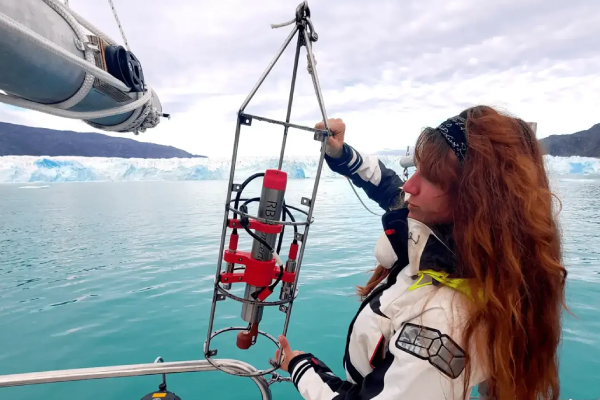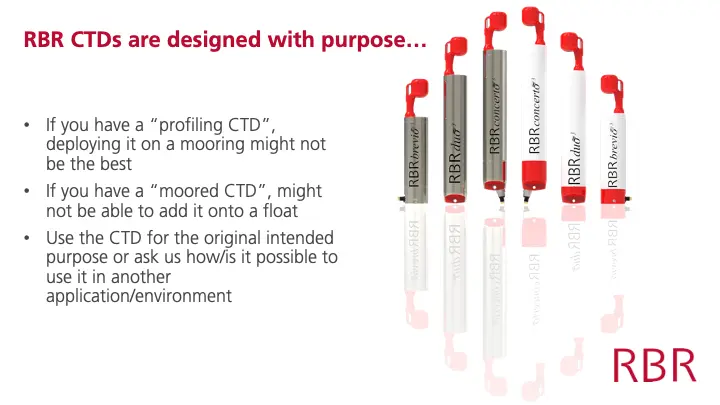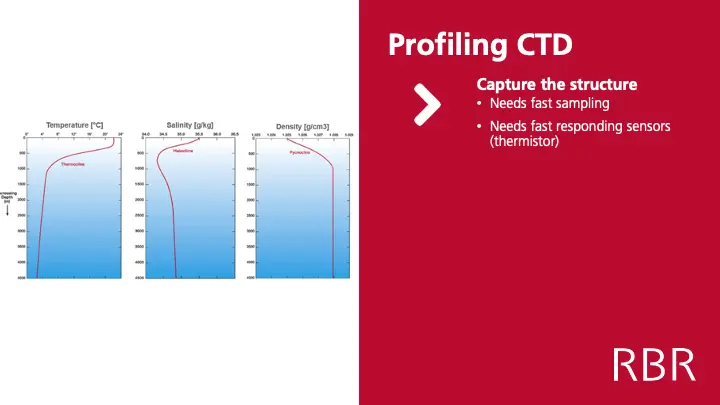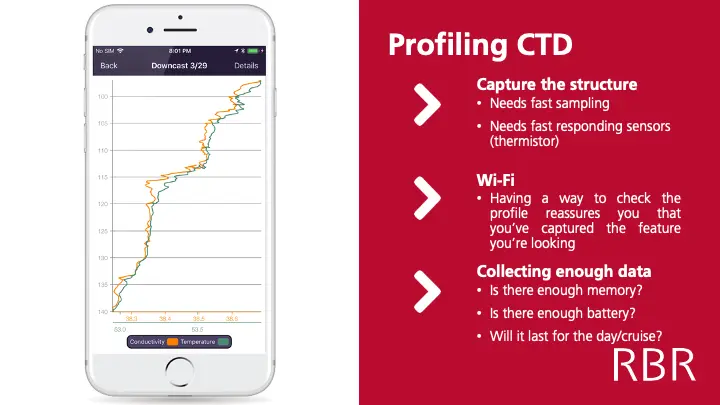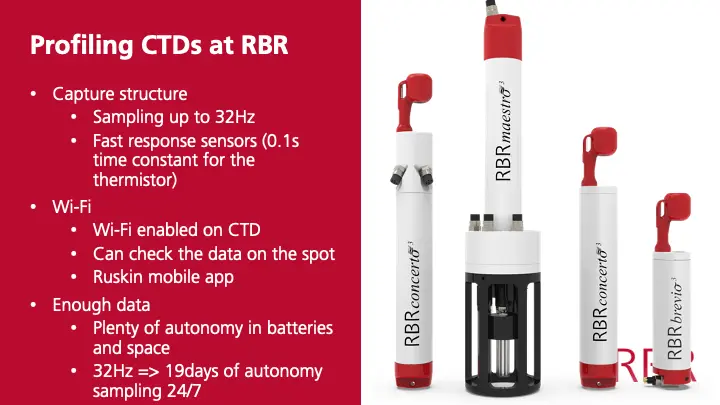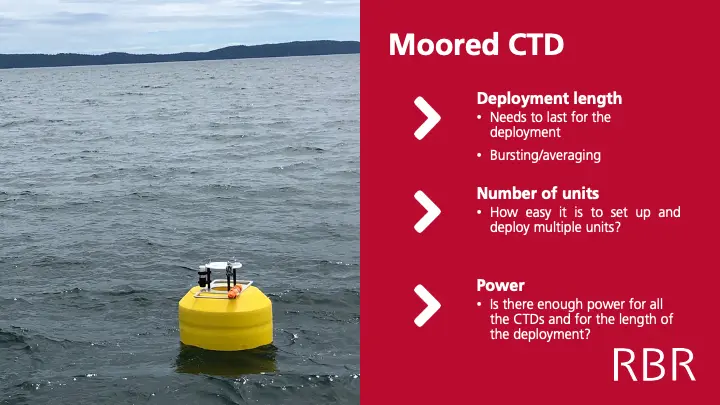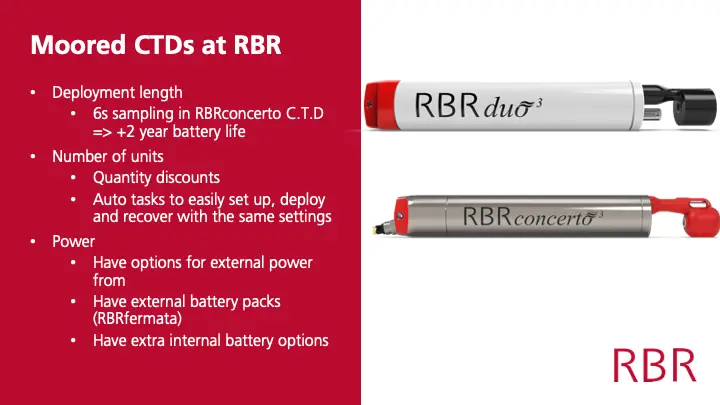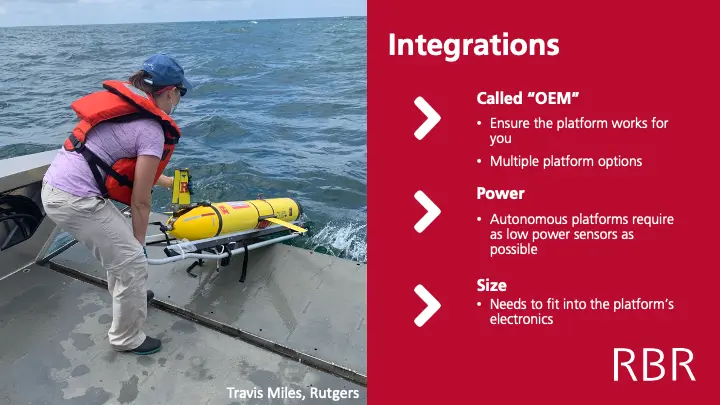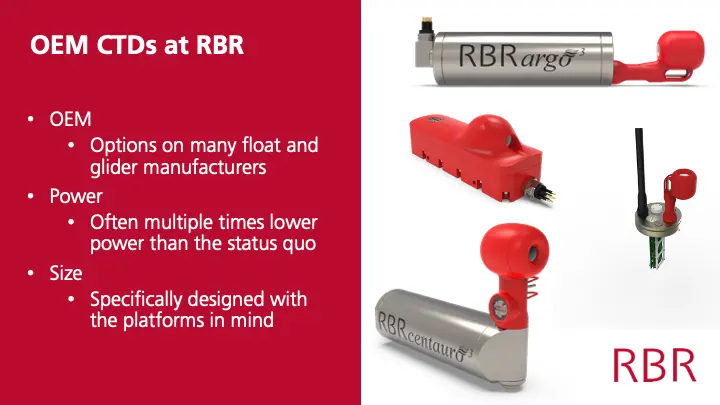Summary
Different CTDs excel in different applications, and with RBR's wide range of available CTDs, the task of picking the best CTD for any particular project can be daunting. Here, we’ve outlined guidelines for choosing the right CTD for your project. We recommend contacting our technical sales team to discuss your specific application needs for the optimal measurement solution.
This blog post is adapted from RBR's webinar "How to choose the right CTD" on March 29, 2023. Check out the full webinar recording here.
- How are you planning on deploying your CTD?
- Physical considerations to take into account when choosing your CTD
- Other considerations to take into account when choosing your CTD
How are you planning to deploy your CTD?
The first and most important question to consider when selecting a CTD is: what are you trying to measure? In most cases, this will broadly dictate how you plan to deploy your CTD. Over the years, we have seen CTDs deployed in many different types of projects and in many different ways, for example:
- Profiling CTDs deployed through ice
- Profiling CTDs as part of a rosette on a ship
- Integrations onto Argo floats
- Integrations onto profiling platforms like the Wirewalker
- Integrations into gliders and AUVs
- Deployed on a moored line
- Dropped from a plane
For the purposes of choosing and configuring a CTD, at RBR we bucket these applications in three overarching CTD deployment types: profiling CTDs, moored CTDs, and CTD integrations. Each type of deployment has different technical requirements and considerations.
If your project requires a profiling CTD:
Profiling CTDs are those that are lowered and raised through the water column to create depth profiles of temperature, salinity, and any other desired variable. When choosing a profiling CTD, it’s important to consider what features you are hoping your CTD will capture.
For example:
- What kind of vertical structure or dynamics, such as stratification, do you want to observe?
- How many measurements per second do you need to capture these features, such as the thermocline, halocline, pycnocline, etc., in your region of interest?
Depending on your answer, you might need fast sampling and fast-responding sensors.
For example, if the CTD has a fall rate of 1m/s in the water, a 16Hz sampling rate would give 16 datapoints per metre in the water column. In contrast, a 2Hz sampling rate would give only two data points per metre. Faster sampling (more data points) means you’re more likely to capture certain features and gives you much higher resolution data. However, if you need faster sampling, then it’s also important to consider if the CTD has enough memory for all of the data being collected and enough battery power to complete the desired sampling.
Between the three CTD sensors, the limiting factor in terms of response time is the temperature sensor. RBR offers thermistors with either a 0.1s time constant (fast temperature sensor) or a 1s time constant (standard temperature sensor). We follow the convention that the time constant of a thermistor is defined as the amount of time for the signal to increase to 63.2% of its final value (i.e., the e-folding time; 63.2% = 1 – 1/e). This quantity is also sometimes referred to as the response time (Emery and Thomson, 2004). The response time of the conductivity and pressure sensors are essentially instantaneous. For profiling applications, we recommend using the fast temperature sensor in order to resolve fine-scale features in the water column.
In addition, consider the size of vessel used for the CTD deployment. For instance, you would likely need a cage to mount the CTD for deployments from a larger vessel, to prevent the CTD from hitting the side of the boat as it is lowered.
And lastly, many people like to have Wi-Fi capabilities as a way of checking their data immediately after doing a CTD cast to ensure they’ve captured enough data to address their science questions.
Examples of RBR profiling CTDs
The most common profiling CTD at RBR is the RBRconcerto3 C.T.D, specifically the RBRconcerto3 C.T.D|fast8, |fast16, or |fast32. This instrument can sample at rates up to 32Hz and its sensors have a fast time constant (0.1 for the thermistor). It works with Wi-Fi, so users can check their data on the spot with the free Ruskin mobile app, and has plenty of battery life and memory for data. For example, at a sampling rate of 32Hz, the RBRconcerto3 C.T.D could sample for 19 days of 24/7 sampling before its memory fills up!
If your project requires a moored CTD:
Moored CTD applications often use the same type of sensors as profiling CTDs, but they can be thought of as a different type of measurement. As opposed to relatively short casts with a profiling CTD, moored CTDs produce a long time series of data at one particular location. As a result, your desired length of deployment is perhaps the biggest consideration in this type of application. Once you have determined how long the deployment will be, you can choose a sampling rate to maximise the battery and memory life for that sampling period.
RBR CTDs offer different sampling strategies, such as bursting/averaging or continuous sampling, which may be useful in moored applications.
- Continuous sampling is a typical sampling strategy, with measurements taken at regular time intervals (e.g. every one second, every one minute, etc.).
- Bursting or averaging sampling means that the sensors are turned on for a set period of time at regular intervals; for example, the sensors could be turned on for five seconds every one minute.
Most people deploy multiple CTDs on each mooring. If this is the case for your project, it’s important to consider the logistics of setting up all CTDs on each mooring with the same configurations.
Power is also often a big concern for this type of deployment, as moorings will need to be supplied with enough power for the CTDs and other instruments to last the entire length of the deployment. How much power does your application need?
Examples of RBR moored CTDs
There are many different RBR CTDs that can be used in a moored applications. The RBRconcerto3 C.T.D might be a great option for longer deployments – for example, with sampling every 6s, its battery would last for two years! When the depth is known, removing the pressure sensor and choosing the RBRduo3 C.T can reduce costs.
In addition, Ruskin‘s Auto-Task features help users easily set up, deploy, and recover multiple CTDs with the exact same settings and configurations.
RBR offers many options for external power for moored CTDs, such as the RBRfermata external battery pack, which can double the length of the RBRconcerto3 C.T.D’s deployment life. However, power should never be an issue for this type of deployment if you are using RBR instruments.
If your project requires a CTD integrated into another platform:
Integrations with third party sensors and data collection systems are common with RBR CTDs, and we support end-users efforts in these areas. RBR also supports manufacturers of floats, gliders, and AUVs in offering RBR CTDs integrated with the products through our original equipment manufacturer (OEM) program. RBR’s OEM CTDs are designed for specific platforms in direct collaboration with manufacturers. The sensors are then given to the platform manufacturers to be directly integrated into the system. When picking a CTD for an integrated platform, it’s important that the CTD is compact enough to fit into the platform’s electronics. For autonomous platforms, it’s also key that the CTD operates on low power to conserve energy for the length of the mission.
Examples of RBR integrated CTDs
RBR manufactures CTDs for many float and glider manufacturers, and although we try to standardise them, they do have slight differences. For example, the RBRlegato C.T.D has a pressure rating down to 1000m or 1200m. If a user needs something that can go deeper, they might need something like the RBRcentauro C.T.D.
Power is additionally often multiple times lower on RBR CTDs than the status quo, which can help extend the mission of gliders, reduce the cost-per-profile, and allow the floats to profile more rapidly for high-resolution operations. RBR loggers act as a ‘sensor hub’ to control and synchronize additional sensors to simplify integration, configuration, and data management.
Physical considerations to take into account when choosing your CTD
Desired deployment depth
It’s important to consider how deep you will be deploying your CTD. Deeper deployments require CTDs made of metal (like titanium) since plastic can’t withstand the pressure of deep depths. At RBR, you can choose from depth ratings ranging from 750m down to 6000m (20, 50, 100, 200 500, 750, 1000, 2000, 4000, 6000 dbar). We calibrate the CTD pressure sensor based on the stated deployment depth. The calibrated accuracy of the sensor is a percentage of the full scale, so there is merit in choosing the proper range for your application.
Please respect the stated deployment depth! CTDs deployed deeper than they are meant to can experience equipment failures and data corruption, compression, and leaks. A compromised CTD can be incredibly dangerous due to the immense pressure underwater.
Adding non-CTD sensors
Do you want to add extra sensors to your CTD? Many projects require the addition of other non-CTD parameter sensors, e.g. biological, chemical, and geological sensor integration.
RBR offers an instrument that supports up to 20 parameters, the RBRmaestro C.T.D multi-channel logger. The most commonly added additional sensors are oxygen, chlorophyll a, and turbidity.
Real-time data transfer
Some projects require real time or near real time data transfer. Possible ways to achieve this are through a mooring line modem (MLM), external connectors/cables, or Wi-Fi. Talk to a sales representative about what will work best for you and your project.
Environmental factors
Environmental factors are also an important physical consideration. Biofouling, strong currents, temperature, and ice are just some examples of environmental factors that might influence your choice of CTD.
To combat biofouling, some optical sensors have wiper options. In addition, RBR is currently manufacturing a CTD which includes an anti-biofouling mechanism.
For strong currents which may impact moorings, clamps are available to help hold equipment onto the mooring line.
If your project involves CTD operation in cold climates, you’ll need to consider how temperature will affect your measurements since colder temperatures drain CTD batteries more quickly. RBR CTDs use very little power and are constructed to withstand extreme temperatures; this means you can freeze and thaw your CTD without having to compromise data quality and quantity.
Other considerations to take into account when choosing your CTD
CTD specifications
The accuracy, resolution, and stability of the sensors will help inform you if a CTD is “good” enough to address your research questions. Contact our technical sales team or consult our product datasheets for specifications for RBR CTDs
- Accuracy tells you how close to the truth a measurement is.
- Resolution tells you how much of a change a CTD can detect (e.g. can you see surface changes in pressure if there is a big tidal range?).
- Stability tells you how the CTD measurements may change over time (i.e. Is there a drift in the data? How will your data look in five months versus five years? Will it need to be calibrated often?).
Calibration turnaround
Calibration of CTDs is necessary to ensure the accuracy and stability of the data you are collecting. However, it is important to account for how having your instruments out of the water for any length of time while waiting for calibration will affect your study. We recommend recalibrating you RBR CTDs every year – our calibration turnaround is guaranteed to take three weeks or less, or it’s free!
Ease of use
Many projects involve different types of people with different types of expertise. It’s important to consider if your project will only have trained ocean technicians operating the equipment, or if you need your equipment to be more accessible to a wider audience. RBR CTDs are very easy to use and are shipped with twist activation enabled, meaning that all you have to do is twist the end cap and the CTD can start collecting data! Many scientists who work on projects with community scientists use RBR CTDs for this very reason.
Consumables
When using CTDs, there are some items that you will likely need to replace over time as they wear out. You’ll want to consider how common these items are and if they are user-replaceable. These items might include batteries (RBR CTDs use standard AA batteries), O-rings (spares are included in your order with RBR), and desiccant to soak up moisture (which is rechargeable).
Cost
Although there is of course the initial cost of your instrument, there are many other costs associated with owning a CTD. You should consider the cost of how often you need to recover/swap instruments to answer your science questions (how good is the CTD?), the cost of getting your instrument out of the water (calibration turn around time), the cost of highly qualified personnel to operate (ease of use), and the cost of consumables (instruments back at factory/proprietary consumables costs).
Last updated 2023-07-24
